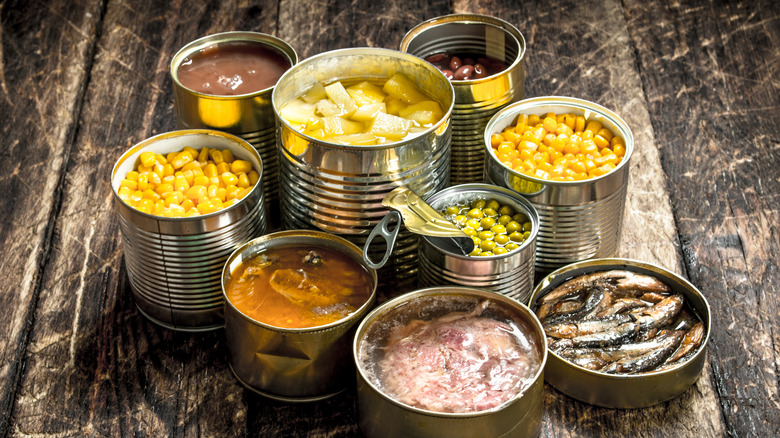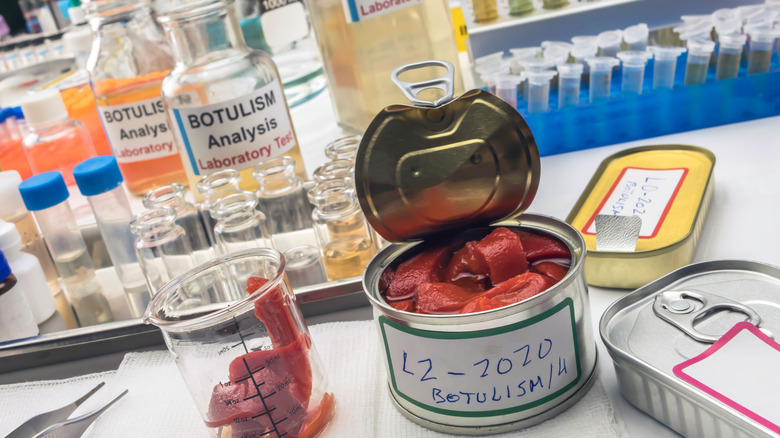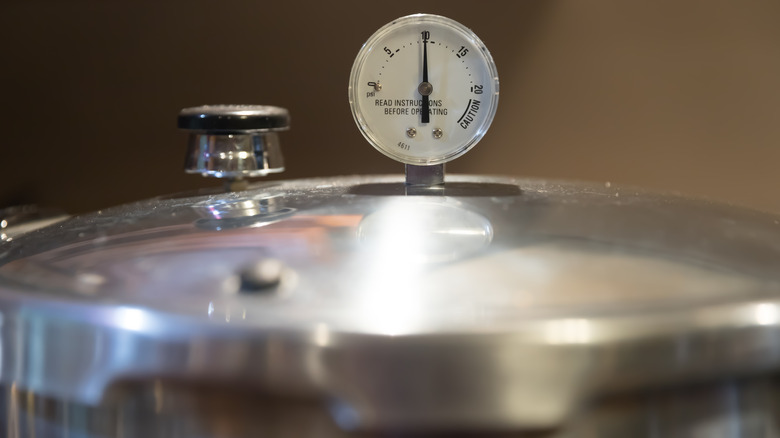Why It Can Be Dangerous To Make Your Own Canned Food
If you're a home gardener then you've probably started to look at the plants popping up in your yard and making plans for how to use all those summer fruits and veggies. As tasty as fresh homegrown produce is, it doesn't last very long, and, on a good year, you can get more of it than you can possibly use at one time. One solution to this may be giving away some excess to friends and neighbors, but another is preserving it for later consumption by canning it. This seems like a great way to get the most out of your homegrown foods. However, there is one major pitfall that you need to avoid when canning; one which could have life threatening consequences.
Botulism is defined by the U.S. Centers for Disease Control and Prevention (CDC) as "a rare but serious illness caused by a toxin that attacks the body's nerves and causes difficulty breathing, muscle paralysis, and even death." This is caused by the spores of bacteria found on most fresh vegetables. Although the Clostridium botulinum bacteria itself is not dangerous to consume, it can become dangerous when the spores multiply then die off, creating a toxin which can be lethal. According to Simply Canning, among the conditions which can cause the toxin to form are low oxygen levels, low acidity in a substance, and temperatures between 40 and 120 degrees F, which are, unfortunately, incredibly common in canned foods.
Risks of botulism
Simply Canning notes that while there is no distinct smell, taste, or appearance to food that is contaminated with botulism toxin, there are some standard signs of spoilage which can be a warning sign that something is wrong. If you see any signs of spoilage, like bulging or leaking lids or mold, immediately dispose of the food to avoid risk of food poisoning. However, even if those things are not there, botulism may still be present.
According to the Cleveland Clinic, if a person contracts botulism, they will show symptoms between 12 and 36 hours after consumption, though it can take up to ten days. Symptoms of botulism include difficulty swallowing, breathing, speaking, as well as dry mouth, blurred vision, facial muscle weakness, nausea, vomiting, and even paralysis. If someone begins to experience these symptoms after consuming canned food –- commercially or home-canned -– it's advised to call the emergency room and get the person to a hospital quickly for treatment.
Following the proper methods
To avoid this potentially deadly issue, the CDC recommends following guidelines that were established by the USDA's Complete Guide to Home Canning, which specifies canning methods to use for which types of food and what sanitary measures to take with them.
Essentially, there are two methods of canning: pressure canning and boiling a water bath. Both of these are designed to kill off bacteria with heat. According to The Spruce Eats, the boiling water method is simpler than the pressure canning method because it requires no special equipment beyond a large pot and canning jars. However, it cannot be used on foods with low acidity. Fresh fruits, jams, jellies, pickled vegetables, and tomatoes that have a bit of added acid can be preserved with the boiling water method (per The Spruce Eats).
Meanwhile, meats, fish, and fresh vegetables are too low in acid to be preserved with this method and require a pressure canner -– a special tool which allows the jars to be heated to higher temperatures (per Simply Canning). This is because, while Clostridium botulinum bacteria can be killed at the temperature of boiling water, some of the spores can continue to survive in a nonacidic environment. Therefore, for low-acid foods, a higher temperature is needed to ensure the foods will stay safe to enjoy another day.


